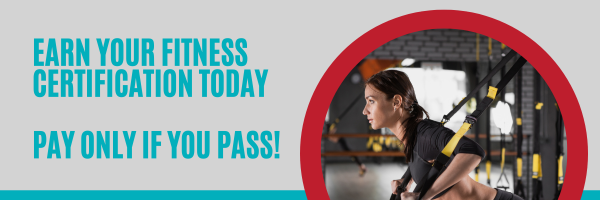Plyometric training, also known as jump training, is a highly effective method for developing power, speed, and explosiveness in athletes and fitness enthusiasts alike. This type of training focuses on utilizing the stretch-shortening cycle of the muscles to generate maximum force in a short amount of time. In this blog post, we will discuss the principles of plyometric training, its benefits, and tips for better plyometric training, as recommended by the American Sports and Fitness Association (ASFA).
Principles of Plyometric Training
The American Sports and Fitness Association (ASFA) emphasizes the importance of understanding the principles of plyometric training to ensure effective and safe execution. These principles include:
- Stretch-Shortening Cycle: Plyometric training relies on the stretch-shortening cycle, which involves a rapid pre-stretch of the muscle followed by a quick, powerful contraction.
- Ground Contact Time: Minimizing ground contact time during plyometric exercises is crucial for maximizing power output and training effectiveness.
- Progressive Overload: Like other forms of training, plyometrics require gradual progression in intensity, volume, and complexity to promote continued improvement and reduce the risk of injury.
- Recovery and Rest: Adequate recovery between plyometric sessions and exercises is essential to prevent overtraining and allow for optimal performance.
Benefits of Plyometric Training
According to the American Sports and Fitness Association (ASFA), plyometric training offers numerous benefits, including:
- Improved Power and Explosiveness: Plyometrics enhance the ability of muscles to generate force quickly, leading to increased power and explosiveness in movements such as jumping and sprinting.
- Increased Speed and Agility: Plyometric training can improve neuromuscular coordination and reaction time, contributing to enhanced speed and agility in sports and everyday activities.
- Greater Lower-Body Strength: Plyometric exercises primarily target the lower body, promoting increased strength in the legs and hips.
- Enhanced Athletic Performance: Athletes who engage in plyometric training often experience improvements in their sport-specific performance, such as jumping height in basketball or acceleration in soccer.
- Improved Balance and Coordination: Plyometric exercises challenge an individual's balance and coordination, leading to improved overall functional fitness.
- Increased Calorie Burn: Plyometric training is a high-intensity form of exercise that can result in increased calorie burn and contribute to weight management or fat loss goals.
Tips for Better Plyometric Training
The American Sports and Fitness Association (ASFA) offers the following tips for better plyometric training:
- Warm-Up Properly: Before beginning any plyometric workout, ensure that you have completed a thorough warm-up, including dynamic stretching and low-intensity exercises to prepare your muscles and joints for high-intensity movements.
- Master Basic Movements: Before progressing to more complex plyometric exercises, ensure that you have mastered basic movements, such as squats, lunges, and jumps.
- Emphasize Quality Over Quantity: Focus on performing each plyometric exercise with proper form and technique, prioritizing quality over the number of repetitions or sets.
- Gradually Increase Intensity and Volume: Progress your plyometric training by slowly increasing the intensity and volume of your workouts, allowing your body time to adapt and reduce the risk of injury.
- Prioritize Recovery and Rest: Give your body ample time to recover between plyometric workouts, and consider incorporating active recovery methods, such as foam rolling and stretching, to support muscle repair and growth.
- Incorporate a Variety of Exercises: To prevent boredom and plateaus, include a diverse range of plyometric exercises in your training routine that target different muscle groups and movement patterns.
- Use Proper Footwear and Surfaces: Wear appropriate footwear with good support and cushioning for plyometric training, and ensure that you perform the exercises on a suitable surface, such as a rubberized or padded floor, to minimize the impact on your joints and reduce the risk of injury.
- Modify Exercises as Needed: Adapt plyometric exercises to suit your current fitness level and abilities, and progress gradually as your strength and proficiency improve.
- Combine Plyometrics with Other Training Modalities: To achieve a well-rounded fitness routine, incorporate plyometric training alongside other forms of exercise, such as resistance training, cardiovascular workouts, and flexibility exercises.
- Seek Guidance from a Professional: If you are new to plyometric training or have specific goals or concerns, consider consulting with a certified fitness professional, such as a personal trainer, who can provide expert guidance and create a tailored program to meet your needs.
Sample Plyometric Exercises
Below are some plyometric exercises recommended by the American Sports and Fitness Association (ASFA) that you can incorporate into your training routine:
- Box Jumps: Jump onto and off of a sturdy box or platform, focusing on minimizing ground contact time and maximizing jump height.
- Depth Jumps: Step off a box or platform and immediately jump vertically upon landing, utilizing the stretch-shortening cycle to generate power.
- Single-Leg Hops: Perform hops on one leg, emphasizing quick ground contact time and explosive power.
- Skater Jumps: Jump side to side, mimicking the motion of a speed skater, to develop lateral power and agility.
- Broad Jumps: Perform a horizontal jump for distance, focusing on generating maximum power and minimizing ground contact time.
Conclusion
Plyometric training offers numerous benefits for athletes and fitness enthusiasts seeking to improve their power, explosiveness, speed, and agility. By following the tips provided by the American Sports and Fitness Association (ASFA), you can maximize the effectiveness of your plyometric training while minimizing the risk of injury.
Remember to prioritize proper form and technique, progress gradually, and listen to your body, adjusting your training as needed. With dedication and consistency, you will be well on your way to achieving your fitness goals and experiencing the benefits of explosive jumping and plyometric training.





